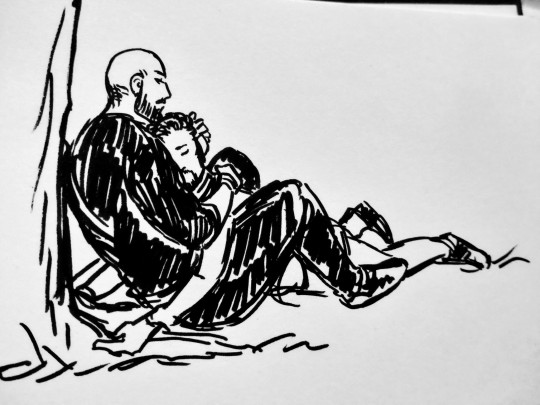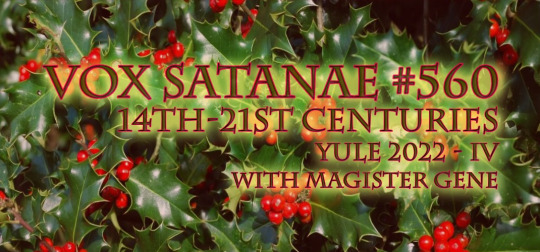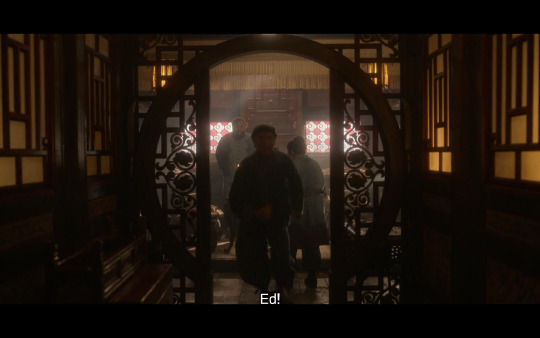#alessandro scarlatti
Photo

Decorative page from a collection of Italian cantatas (1700-1720) by Giovanni Lorenzo Lulier, Alessandro Scarlatti.
Bibliothèque nationale de France, département Musique.
190 notes
·
View notes
Text
Alessandro Scarlatti (1660-1725) - Sonata No. 1 for Cello and Basso continuo in d-minor, II. Allegro [in g-minor]. Performed by Mauro Valli, cello, and Accademia Bizantina on period instruments.
#alessandro scarlatti#baroque#classical music#cello#cellist#period performance#period instruments#cello sonata#sonata#baroque music#scarlatti#strings#chamber music
50 notes
·
View notes
Text
youtube
Alessandro Scarlatti (1660-1725) - Il giardino di rose: Aria "Starò nel mio boschetto"
Conductor: Paolo Zanzu
Chamber Music Ensemble: Le Stagioni
Counter Tenor: Carlo Vistoli
Harpsichord: Paolo Zanzu
6 notes
·
View notes
Text

Bruintober part 45
Sleep, then, if you so desire, sleep for ever!
More of the Cain and Abel stuff
12 notes
·
View notes
Video
youtube
Early Music Sources on the Neapolitan Chord
#music#music theory#neapolitan chord#neapolitan sixth#early music sources#elam rotem#sean curtice#doron schleifer#karel valter#alessandro scarlatti#william crotch#chord#chords#neapolitan 6th
11 notes
·
View notes
Audio
Alessandro Scarlatti (1660-1725): motet - Infirmata Vulnerata
Ryland Angel (countertenor)
Alessandro Scarlatti: Totus Amore
Les Folies Francoises, dir. Patrick Cohën-Akenine
Deux-Elles, 2006
3 notes
·
View notes
Text
Vox Satanae - Episode #560: Yule 2022 - IV, 14th-21st Centuries - Week of December 19, 2022
Vox Satanae – Episode #560: Yule 2022 – IV, 14th-21st Centuries – Week of December 19, 2022
Vox Satanae – Episode #560
Yule 2022 – IV
14th-21st Centuries
We hear anonymous and traditional works and works by Thomas Tallis, Jacobus Vaet, Michael Praetorius, Alessandro Scarlatti, Christoph Weyse, Heinrich Kaminski, Hugh Martin, Ralph Blane, Irving Berlin, Mel Tormé, Myroslav Skoryk, Franz Gruber, Sir John Tavener, John Rutter, and Peter Warlock.
167 Minutes – Week of 2022 December…

View On WordPress
#alessandro scarlatti#Christoph Weyse#classical instrumental music#classical music#classical vocal music#Franz Gruber#Heinrich Kaminski#Hugh Martin#Irving Berlin#Jacobus Vaet#john rutter#magister gene#Mel Tormé#michael praetorius#Myroslav Skoryk#Peter Warlock#radio free satan#Ralph Blane#Sir John Tavener#Thomas Tallis#vox satanae
3 notes
·
View notes
Text
Sicily
https://on.soundcloud.com/zsEoRr2fHVyXaunn7
Sicily is the largest and most populous island in the Mediterranean Sea. It has a picturesque coastline and historic towns, and offers beaches, mountains, active volcanoes, and even skiing in winter. It produces wine, almonds, pistachios, olives, citrus, and seafood but also has a rich culture in arts, music, literature, cuisine, and architecture. In…

View On WordPress
#Alessandro Scarlatti#bell&039;Antonio#Berliner Philharmoniker#Casta Diva#classical#Classical Music#Claudio Abbado#composers#Dorothee Oberlinger#Ensemble 1700#Francesco Buzzaro#Fuego#Giuseppe Verdi#Il Giardino d&039;Amore#iovanni Sollima#Kathryn Stott#London Philharmonic Orchestra#Music#Norma#opera#Paul Archibald#Renée Fleming#RTHK Radio 3#Sicilian Vespers Overture#Sir Charles Mackerras#Tema III#Vincenzo Bellini#Yo-Yo Ma
0 notes
Text
Happy birthday Alessandro Scarlatti
0 notes
Text
Mi crítica del concierto de la OBS esta noche en el Espacio Turina.
#obs#orquesta barroca de sevilla#hiro kurosaki#dorothee oberlinger#rafael ruibérriz de torres#domenico scarlatti#leonardo leo#johann hoachim quantz#domenico natale sarri#alessandro scarlatti#giovanni battista pergolesi#francesco mancini#música#music
0 notes
Text
Veja "«Dormi, o fulmine di guerra» | Alessandro Scarlatti | Filippo Mineccia | English Translation" no YouTube
0 notes
Text
Alessandro Scarlatti (1660-1725) - Concerto grosso No. 2 for Strings and Basso continuo in c-minor, I. Allegro. Performed by Accademia Bizantina on period instruments.
#alessandro scarlatti#baroque#classical music#strings#orchestra#period performance#period instruments#concerto#concerto grosso#string orchestra#scarlatti#violin#viola#cello#harpsichord#baroque music
41 notes
·
View notes
Text
youtube
Alessandro Scarlatti (1660-1725) : Il Giardino d'amore - Più non m’alletta e piace
?
2 notes
·
View notes
Text
Alessandro Scarlatti
Happy birthday, Pietro Alessandro Gaspare Scarlatti!
youtube
0 notes
Text
Concerto iperciclico
Vieri Tosatti (1920 - 22 marzo 1999): Concerto iperciclico in un movimento per clarinetto e orchestra da camera (1970). Giuseppe Garbarino, clarinetto; membri dell’Orchestra «Alessandro Scarlatti» di Napoli diretti dall’autore.
youtube
View On WordPress
0 notes
Text



Right near the beginning of s2 e3, there's another classical banger: La Folia. The first instance of the bassline shows up around 1670, and then for centuries, composers all over Europe have a go at writing variations on it. (Honestly, composers are still having a go at it, not limited to in Europe. This website attempts to catalogue all the compositions based on or inspired by La Folia, and, well, there are A LOT.
What we hear in this episode is a "later folia," in which a set melody in a minor key is put over that bassline. The result is a sober, stately dance tune, in a triple meter, with the emphasis on the second beat, which shows up in the beginning and ending of later folia settings. (In between the beginning and end, composers improvise more freely, as performers would in jazz or blues.)
Lully, Corelli, Marin Marais (whom I imprinted on), Alessandro Scarlatti and Vivaldi all had Folia variations in circulation by the time Ed and Stede met, though we know that this show is historically inspired rather than tied to history.
The piece's title means "madness" or "folly"-- perhaps of the sort that might lead you to bellyflop into the ocean to board a ship with no sails and no wheel, in the hope that someone you love is still there and alive.
#if love is foolish don't let me be wise#if love is madness don't let me be sane#La Folia#stede bonnet go get your man#ofmd s2 spoilers#our flag means death#classical music
53 notes
·
View notes